Colleagues & Collaborators
Bridget F. B. Algee-Hewitt

Bridget F. B. Algee-Hewitt is a Biological Anthropologist in the Department of Biology at Stanford University. Algee-Hewitt was awarded her PhD in Anthropology at the University of Tennessee in Knoxville and her Master's degree from Bryn Mawr College in Classical and Near Eastern Archaeology. She has completed post-doctoral work in both skeletal biology and human genetics, as the Haslam Post-Doctoral Fellowship for Research in Forensics at the University of Tennessee and a Fellow in the Stanford Center for Computational, Evolutionary and Human Genomics. She has also served as an Assistant Professor in Biomedical Sciences, teaching clinically oriented anatomy, physiology and advanced human dissection. Algee-Hewitt's current research program includes developing novel computational approaches to biological data analysis from a dual skeletal and genetic perspective. The breadth of her interests in skeletal biology, population genetics, and biostatistics has allowed her to contribute to research that has theoretical implications for the larger study of human variation, evolution, and population history in Anthropology, while also making practical contributions to the applied fields of human identification in the Forensic Sciences. Algee-Hewitt and Slice have recently received a National Institute of Justice grant in support of their newly developed computational methods for age-at-death estimation from skeletal indicators using laser scan data. Algee-Hewitt will be joining FSU faculty in fall 2016.
E-mail: bridgeta at stanford dot edu, balgeehe at vols dot utk dot edu
Twitter: @BridgetAH
FSU Profile: http://tinyurl.com/BridgetAlgee-Hewitt
Recent Publications:
Algee-Hewitt, B. F.B., Edge, M. D. , Kim, J., Li J. Z. and Rosenberg, N. A. (2016). Individual identifiability predicts population identifiability in forensic microsatellite markers. Current Biology. doi:10.1016/j.cub.2016.01.065
Algee-Hewitt, B. F.B. (2016). Population inference from contemporary American craniometrics. Am. J. Phys. Anthropol.. doi: 10.1002/ajpa.22959
Michael D. Carrasco
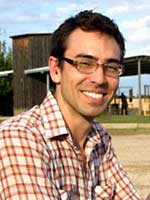
Michael D. Carrasco is Associate Professor of Art History and founder of the MA in Museum and Cultural Heritage Studies and the Visual Cultures of the Americas field of study in the Department of Art History at Florida State University. From 2003–2006 he was the Luther Gregg Sullivan Visiting Scholar in Art History at Wesleyan University where he developed the Unaahil B'aak: Temples of Palenque website with the Learning Objects Development Team. He specializes in the visual culture, literature, and writing systems of the indigenous peoples of Latin America, with a specific focus on Mesoamerica. He is the co–editor and a contributor to the volumes Pre–Columbian Foodways: Interdisciplinary Approaches to Food, Culture, and Markets in Ancient Mesoamerica (2010) and Parallel Worlds: Genre, Discourse, and Poetics in Contemporary, Colonial, and Classic Maya Literature (2012). He received his BA in archaeology from Wesleyan University and earned a MA and PhD in Art History from the University of Texas at Austin.
E-mail: mcarrasco at fsu dot edu
Brian D. Corner
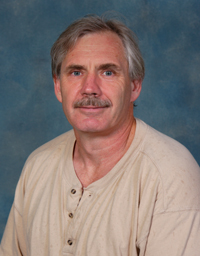
Brian is the lead scientist in the US Army's Three Dimensional (3D) Data Acquisition and Analysis Program at the US Army Natick Soldier Research, Development, & Engineering Center in Natick, Massachusetts. The Army is a leading research center in the development of software to analyze the Soldier-equipment interface, with 3D scanning as a means of visualizing equipment integration. Statistical geometric forms from scan data are being incorporated into virtual models for multiple simulation efforts including casualty estimation, ergonomics, and biomechanical analysis. Brian is also involved in advancing 3D scanning for logistics applications, and was 3D scan technical lead for the recent large scale Marine Corps and Army anthropometric surveys, MC-ANSUR and ANSUR-II.
Joshua D. Englehardt
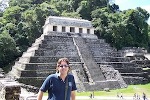
Joshua D. Englehardt is a Profesor-Investigador at the Centro de Estudios Arqueológicos of the Colegio de Michoacán. He specializes in Mesoamerican archaeology and writing systems, specifically Maya epigraphy and the development of the Mayan script. His current research focuses on the development of Mesoamerican writing systems in the Formative period and the correlation of emerging scripts with interregional interaction and diachronic changes in iconography and material culture. His most recent publication is the edited volume Agency in Ancient Writing (2012). He obtained a BA from the University of Michigan, received his MA in anthropological sciences at the Universidad Autónoma de Yucatán, and earned his PhD in anthropology from Florida State University. He has lived, worked, or studied in a variety of countries, including Nepal, India, Thailand, England, Kenya, and Mexico.
E-mail: jenglehardt at fsu dot edu
R. Dean Grubbs

Dr. Dean Grubbs is a fish ecologist with interests in the biology of recreationally and commercially important as well as poorly studied taxa of estuarine and marine fishes. Much of his research addresses specific biological gaps necessary for management of fisheries resources, especially coastal and deepwater sharks and rays as well as large pelagic teleosts. Dean specializes in the use of fishery-independent survey methods to study population dynamics, life histories, and distribution patterns of fishes. As an extension of this, his research includes the use of conventional mark-recapture methods and modern telemetry techniques to acquire data on movement patterns, habitat use, residency and philopatry. A principal goal of this line of research is to delineate essential and vulnerable habitats for exploited or threatened species. Other areas of expertise include studies of trophic ecology, growth, and reproduction. Dean is currently an Associate Scholar Scientist and the Associate Director of Research at Florida State University’s Coastal and Marine Lab where he mentors graduate and undergraduate students and maintains and active research program on the ecology of deepwater and coastal fishes.
Website: http://www.marinelab.fsu.edu/faculty/deangrubbs.aspx
E-mail: dgrubbs at bio dot fsu dot edu
Representative citation:
Grubbs, R.D. 2010 Chapter 7. Ontogenetic Shifts in Movements and Habitat Use. In Carrier JF, Musick JA, Heithaus MR (eds.). Sharks and Their Relatives II: Biodiversity, Adaptive Physiology, and Conservation, CRC Press, New York, New York, USA. pp. 319-350.
Jeff Hudson

Jeff is a Biological Anthropologist and Principal Investigator (PI) for Infoscitex (a dcs corporation) contracted to support the US Air Force Anthropometry Laboratory (Anthro Lab). The primary role of the Anthro Lab is to ensure pilots, aircrew and operators are physically accommodated while performing the mission tasks in cockpits and crew stations, and while wearing Personal Protective Equipment (PPE). We support design engineers by providing 'Anthropometric Cases' defined by characterizing relevant size and shape variation using traditional anthropometry (e.g. US Army ANSUR 1988 database) with multivariate analysis, and by using modern 3D scan databases (e.g. USAF Air Crew Sizing Survey) and applying geometric morphometric techniques. In the early 1990s he began supporting the Anthro Lab with the generation of multivariate, boundary anthropometric cases used in the design of the T-6A Texan II cockpit. Since then he has continued as an Anthro Lab PI, specializing in cockpit accommodation, and has worked on nearly all of the aircraft in the Air Force inventory. He is also a team member on various programs involving PPE fit assessment as well as the verification and validation of digital human modeling systems for cockpit applications. He is currently focused on characterizing variation in torso shape for next generation body armor design in a collaborative project with the U.S. Army Natick Soldier RDEC, as well as empirically modeling encumbered anthropometry' for future USAF pilot PPE ensembles.
Mailing Address:
Jeffrey A. Hudson, Ph.D.
Infoscitex (a dcs corporation)
Bldg. 824, 2800 Q St.
Wright-Patterson AFB, OH 45433-7947
E-mail: Jeffrey dot hudson dot ctr at wpafb dot af dot mil
Representative citation:
Hudson, J.A., Zehner, G.F., Meindl R.S., (1998, Oct. 5-9). The USAF Multivariate Accommodation Method. In the Proceedings of the 42cd Annual Meeting of Human Factors and Ergonomics Society, Chicago, IL, (pp. 722-726).
Anna Loy
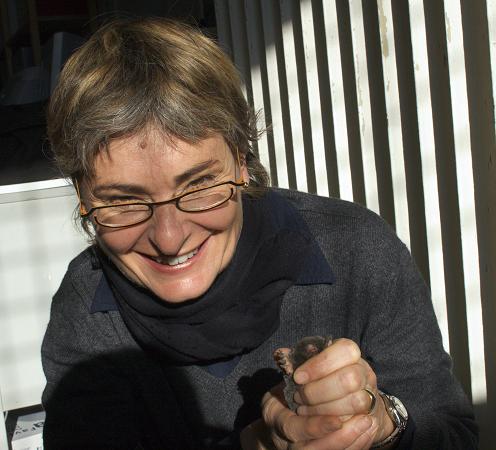
Associate Professor in Zoology at the Università del Molise, Italy. Mainly interested in mammals. I've been involved in Geometric Morphometrics from the very beginning in the late '80, mainly to disclose geographic and evolutionary changes in subterranean mammals, but also bears, martens, and more recently, dolphins. Some digressions also to crabs and oaks. Now very interested in the evolution of 3D methods and in modularity. Collaborations with morphometricians often turned to long standing friendships.
Website: http://docenti.unimol.it/index.php?u=a.loy
E-mail: a dot loy at unimol dot it
Representative citation:
Loy A, Tamburelli A., Carlini R., Slice D. E. 2011. Craniometric variation in some Mediterranean and Atlantic populations of Stenella caeruleoalba (Mammalia, Delphinidae): a 3D geometric morphometrics analysis. MARINE MAMMAL SCIENCE 27(2): E65–E78
Philipp Mitteroecker

I am developing geometric morphometric and multivariate statistical tools to explore patterns of phenotypic variation, using various kinds of data, including three-dimensional CT and microCT images. I have worked on the quantification of concepts in evolutionary and developmental biology, such as heterochrony, morphological integration, modularity, and canalization. My empirical work has largely been in evolutionary anthropology and human anatomy, including medical applications in orthodontics, and I have also worked on other animals, including several fish species.
Website: http://theoretical.univie.ac.at/people/mitteroecker/
Mailing Address:
Dr. Philipp Mitteroecker
Department of Theoretical Biology
University of Vienna Althanstrasse 14
A-1090 Vienna, Austria
E-mail: philipp.mitteroecker at univie dot ac dot at
Representative citation:
Mitteroecker P, Gunz P, Neubauer S, Müller GB (2012) How to explore morphological integration in human evolution and development? Evolutionary Biology 39(4), 536-553
Gavin Naylor
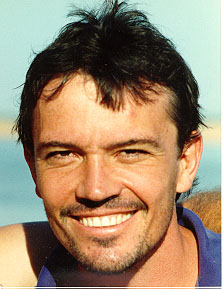
I am interested in using phylogenetic trees to shed light on the transformation of form from one organismal form to another over evolutionary time. I have a background in molecular evolutionary phylogenetics but am also interested in the objective quantification of change in form using Geometric morphometrics.
Website: http://prosper.cofc.edu/~sharkevolution/
E-mail: gjpnaylor at gmail dot com
Representative citation:
Naylor, G.J.P (1996). Can partial warp scores be used as cladistic characters? In Advances in Morphometrics. Marcus, L.F., M.Corti, A. Loy, G.J.P. Naylor and D. Slice eds. Nato Advanced Study Institute. Plenum, New York. pp. 519-530
Ann Ross
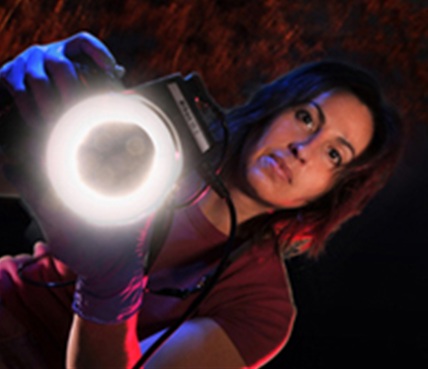
I am a Forensic Anthropologist/Skeletal Biologist at North Carolina State University. My areas of research include craniofacial variation, developing new population-specific standards for various aspects of the biological profile, trauma assessment, child abuse and human rights. Dennis and I developed 3D-ID, which is currently being used by various forensic anthropologists both nationally and internationally to estimate ancestry and sex from unknown decedents.
Website: http://anthropology.chass.ncsu.edu/forensics/
E-mail: across at ncsu dot edu
Representative citation:
Ann H. Ross, Shanna E. Williams. 2010. Craniofacial Growth, Maturation and Change: Teens to Midadulthood. The Journal of Craniofacial Surgery 21:458-461.
Ruth-Sophie Sonnweber

I received my MSc in Zoology in 2009 from the University of Vienna. My masters project looked at influences of (a rather 'aggressive&' form of) tourism on the reproductive behavior and reproductive physiology in Barbary macaques inhabiting the Rock of Gibraltar. This project strengthened my interests in (1) social, and reproductive behavior, cognition, and stress physiology on the one hand side, and (2) the expression of this very conspicuous trait that we find in many Old World primates: sexual swellings. A follow-up project that aimed at looking at the 3D-nature of these sexual swellings brought me back to Gibraltar for another field season and introduced me to morphometric analysis tools. This project was the onset of a wonderful and successful collaboration with Prof. Slice. We developed a method that allows for volumetric analysis of sexual swellings with landmark data derived from a set of 2D-pictures. Although my PhD project at the Department of Cognitive Biology at the University of Vienna looks at pattern learning abilities in three primate species, and the role of stress-related hormones on learning, my interest in morphometric analyses of interesting biological shapes persists.
E-mail: ruth-sophie.sonnweber at unive dot ac dot at
Representative citation:
Sonnweber RS, Stobbe N, Zavala-Romero O, Slice DE, Fieder M, Wallner B. 2013). A new method for the analysis of soft tissues with data acquired under field conditions. PLOS ONE
Vincenzo Viscosi
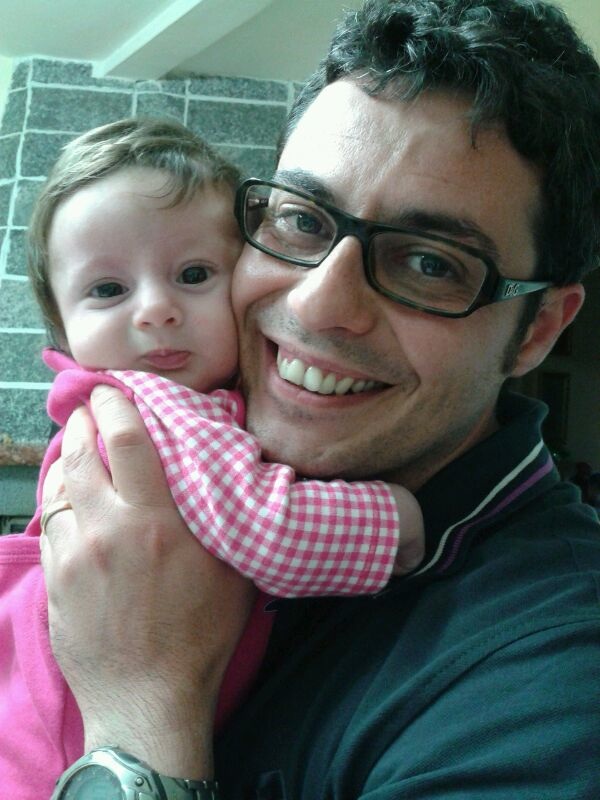
I am interested in the application of traditional and geometric morphometrics, investigating phenotypic variability in plant organisms. I have experience in taxonomical studies of critical groups of plant species, based on the analysis of relationships between phenotypes, genotypes and habitat conditions. My first interest focuses on the analysis of leaf shape variability in a group of interfertile and sympatric oak species (white oaks), exploring the dynamics that regulate the phenotypic variation of species and their hybrids.
E-mail: vincenzo.viscosi at istruzione dot it
Representative citation:
Viscosi V, Cardini A. 2011. Leaf Morphology, Taxonomy and Geometric Morphometrics: a Simplified Protocol for Beginners. PLOS ONE 6(10): e25630.
Aki Watanabe
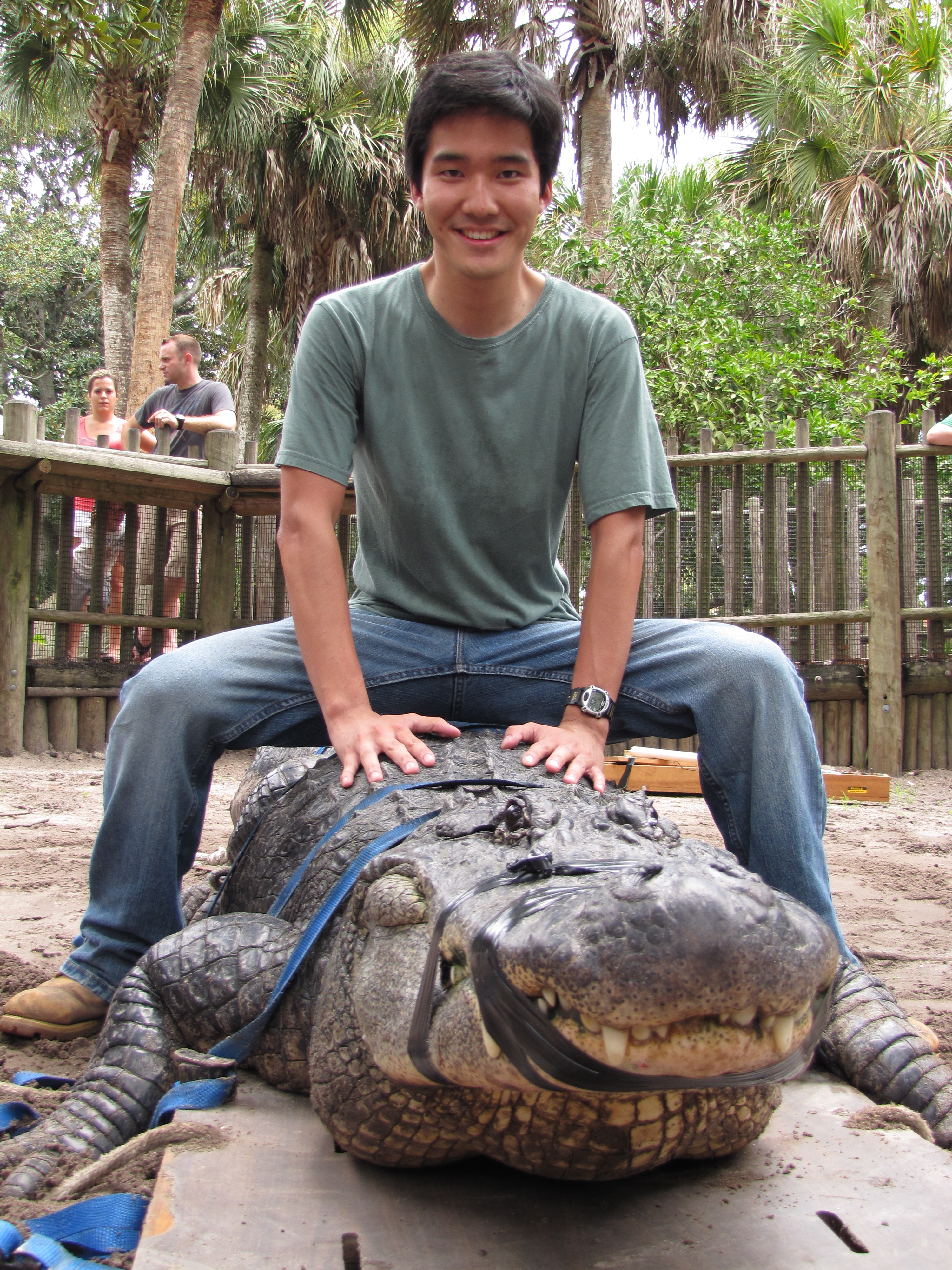
Aki is currently a doctoral student in the Comparative Biology program at the American Museum of Natural History in New York. His primary research pursues a comprehensive understanding of the evolution of growth and development in archosaurs (crocs, dinosaurs, birds) via the integration of 3-D GM, ontogeny, phylogenetics, systematics, and vertebrate paleobiology. Scripts relevant to the construction and analysis of GM data are available on his personal website.
Website: https://sites.google.com/site/akinopteryx/
E-mail: awatanabe at amnh dot org
Representative citation:
Watanabe, A. 2012. The ontogeny of cranial morphology in extant crocodilians and its phylogenetic utility: a geometric morphometric approach. MS Thesis, Florida State University.
Olmo S. Zavala Romero
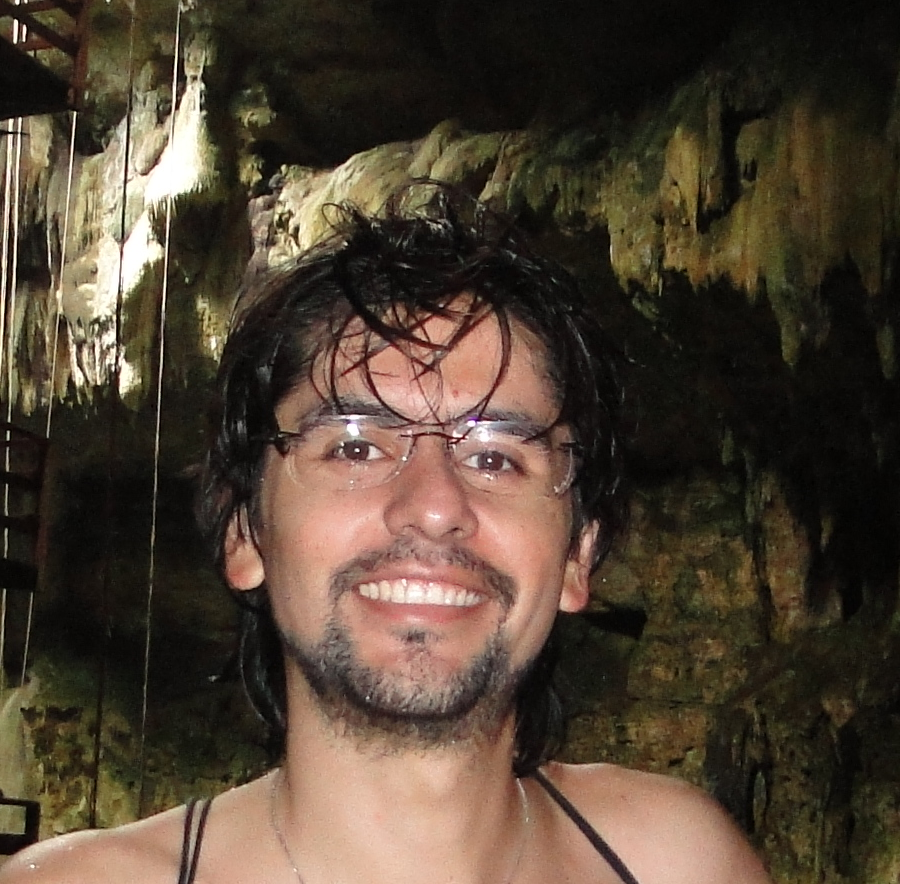
I am Ph.D. student at the department of Scientific Computing in Florida State University. I am interested in computer vision, specifically in medical imaging, and in high performance computing using graphics processing units (GPU's). I am currently working on the automatic segmentation of breast lesions using Dynamic Contrast Enhanced MRI images and GPU's.
Website: http://olmozavala.com
E-mail: osz09 at fsu dot edu
Representative citation:
Zavala-Romero O, Meyer-Baese A and Meyer-Baese U. Multiplatform GPGPU implementation of the active contours without edges algorithm. Proc. SPIE 8399, Visual Information Processing XXI, 83990E (May 1, 2012);
Greg Zehner
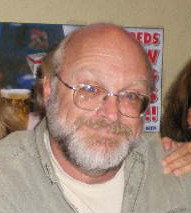
Senior Physical Anthropologist for the Air Force Research Laboratory. Serves as principle investigator for research programs to develop new techniques for measuring human size variability and predicting pilot fit and accommodation in Aircraft Cockpits, Workstations and Protective Ensembles. These methods are applied in the specification and verification testing of new USAF equipment.
Mailing Address:
711th Human Performance Wing
2510 Fifth Street
Wright-Patterson AFB, OH 45433-7901
E-mail: Gregory.zehner at wpafb dot af dot mil
Representative citation:
Zehner, G.F., Meindl, R.M., and Hudson, J.A. (1992) A Multivariate Anthropometric Method For Crewstation Design: Abridged, Technical Report AL-TR.-1992-0164, Crew Systems Directorate, Human Engineering Division, Armstrong Laboratory, Wright-Patterson AFB.
